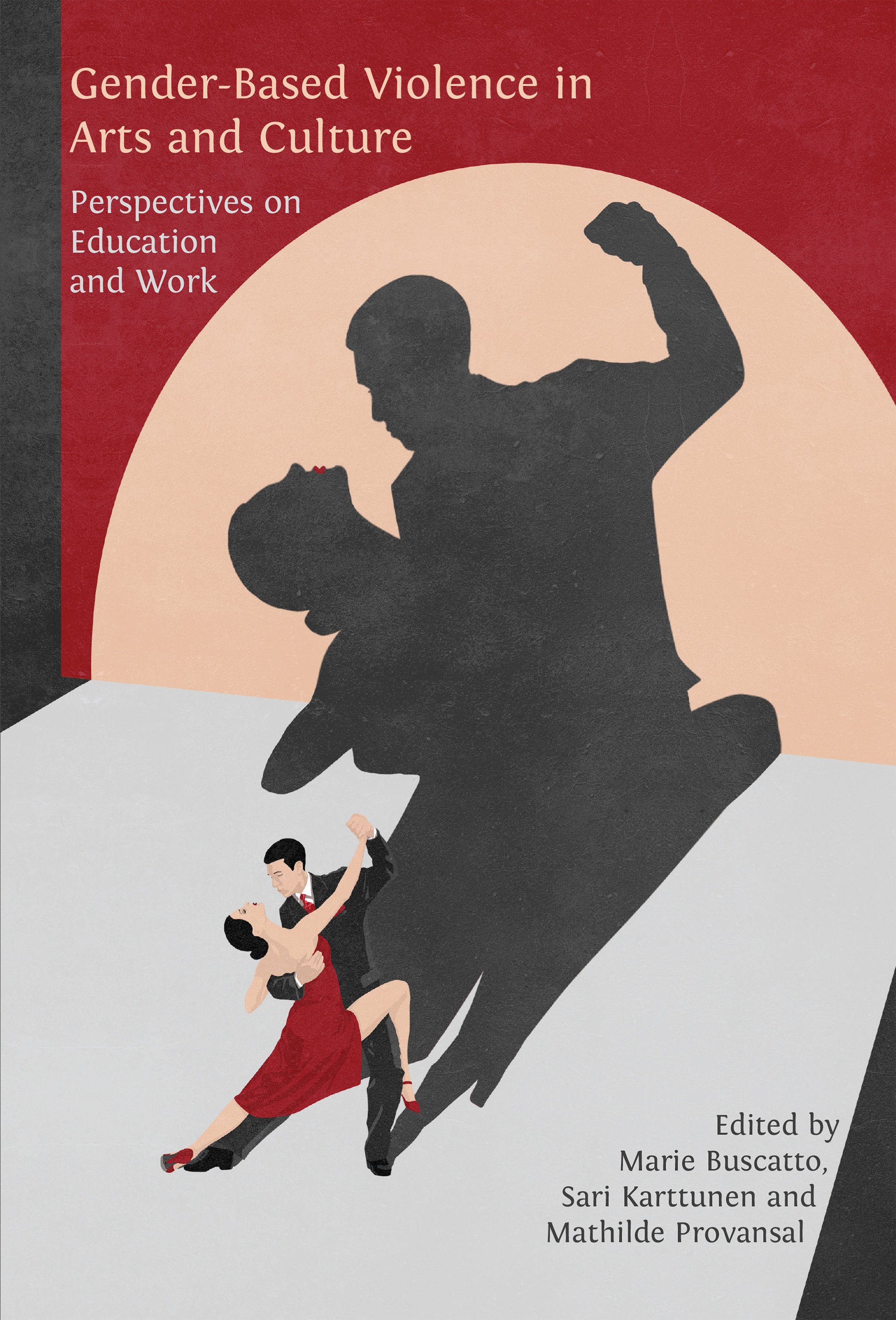Conclusion
Marie Buscatto, Sari Karttunen and
Mathilde Provansal
©2025 M. Buscatto, S. Karttunen & M. Provansal, CC BY-NC 4.0 https://doi.org/10.11647/OBP.0436.09
As expressed in our general introduction, we chose an extensive definition of gender-based violence in order to describe all forms of violence and identify aggressors and victims beyond the men/women dichotomy, as well as the wealth of social processes which participate in producing, perpetuating, legitimising or challenging its existence. Using this robust epistemological stance, and through the development of in-depth case studies conducted in several artistic and cultural worlds—opera, visual arts, popular and electronic music, screen industries, photography and theatre—and a wide range of countries—Finland, France, Japan, the United Kingdom and the United States—this book identified several traits of gender-based violence experienced in artistic and cultural worlds.
First of all, artistic and cultural worlds fully operate as unequal and hierarchised gender regimes. These spheres not only maintain the binary division between men and women (both objectively and subjectively), but also reinforce this division as a ‘natural’ and dominant reality, upheld by heteronormative dynamics. While expressing themselves as open to non-binary, queer or transgender as well as homosexual, bisexual or asexual people—in other words as open to any kind of gender identity and sexuality—most people evolving in those worlds still identify themselves and others as either men or women, and participate in creating a heteronormative order. Moreover, aggressors tend to be men while victims tend to be women. And several social processes, embedded in daily professional practices, heavily participate in producing, perpetuating and legitimising such unequal, hierarchised and hurtful gender regimes.
Moreover, this book assesses the relevance of Liz Kelly’s approach to gender-based violence as a continuum, from everyday sexism to criminal offences affecting women over their life course, whether it impacts their artistic education, their entry into the art world or their subsequent careers. The chapters constituting this book prove that this continuum of violence shapes how gender-based violence emerges, persists and ingrains itself in the dynamics that organise artistic and cultural worlds. This finding may inspire action for change to those artists, activists and professional intermediaries who are keen to reduce, or even to eliminate, gender-based violence in their professional worlds: start with combating everyday sexism, do not settle for repeated criminal sexual acts, as is still the case when gender-based violence is challenged in artistic and cultural worlds. While criminalising a few repeat offenders and excluding them from artistic and cultural worlds may seem like a first step towards the reduction of gender-based violence, our case studies do not seem to support this prevailing belief. Everyday sexism is at the heart of gender-based violence, allowing for its perpetuation and pervasiveness, even when repeat aggressors are condemned and excluded.
Last but not least, our book shows that those seeking to reduce gender-based violence, or even eliminate it, need to better document the social processes ingrained in professional practices in their specific artistic or cultural world that not only enable gender-based violence to occur but also make it difficult to combat. These include the sexualisation of female students and artists; the major role of male mentors in opening doors to young and experienced artists; the ideology of talent; the blurred boundaries between private and professional lives; the precariousness and high-level of competition; the lack of processes for denouncing gender-violence acts, even when criminal in essence. Our case studies on gender-based violence in artistic and cultural education and work contexts reveal that research on gender-based violence would greatly benefit from an expanded focus, examining the experiences of women, gender and sexual minorities beyond formal workplaces and educational settings, formal employment and paid work.
To conclude, it appears, through those different case studies conducted in several countries, that fighting gender-based violence is not only about creating safer educational and professional worlds, but also about creating equal access to training, to recruitment, to working and to recognition for women and gender and sexual minorities.
Despite its deep and rich findings, this book has limitations which we hope will inspire future research. The case studies’ lack of coverage of lesbian, gay, bisexual, transgender and queer people calls for further investigation on gender-based violence targeting these groups. The limited number of cases encountered during fieldwork prevented authors from adequately studying the commonalities and specificities of gender-based violence against LGBTQ+ people. More research is needed to describe the forms of gender-based violence against people challenging the gender binary and heteronormativity in artistic and cultural worlds, to account for the contexts and the social processes driving the violence and to study its role in perpetuating gender and sexual hierarchies. Gender-based violence does not concern white heterosexual cis-men and cis-women only, even though marginalised voices were a minority in the case studies of this book.
Research is also warranted into gender-based violence experienced by people located at the intersection of several systems of inequality to understand how social class, race, age, sexuality, national origin or disability shape gender-based violence, its denunciation and challenges. Further attention to gender-based violence against minoritised people requires reflection on the best suited methodological approach to access and study their experiences. For example, collaborating with collectives fighting diverse forms of oppressions in the artistic and cultural fields may allow researchers to learn how best to recruit research participants.
Finally, this book offers an exploration of the pervasive issue of gender-based violence within a wide array of artistic and cultural sectors and across diverse global contexts. Despite this ambitious scope, its findings should be expanded to include voices from the Global South.
We hope that the important insights of Gender-Based Violence in Arts and Culture: Perspectives on Education and Work will spark discussions among students, artists, cultural intermediaries, activists, scholars, politicians and anyone concerned with ensuring creative freedom in work and education, untainted by gender-based violence.
